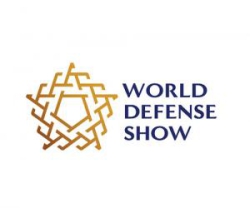B-2 Spirit Stealth Bomber’s 1st Sortie Over North Pole
06.04.2012 North America
Under contract to the U.S. Air Force, Northrop Grumman Corporation's B-2 Spirit stealth bomber has completed its first 18.5-hour sortie over the North Pole to validate new flight management software. The computer upgrade system, which is the cornerstone for all future B-2 upgrades, is now ready to enter low-rate initial production.
The Extremely High Frequency (EHF) Increment 1 system verification review demonstrated the computer upgrade program successfully satisfied the government's requirements. The sortie also included air-refueling to and from the North Pole from Edwards Air Force Base, California.
The verification reviews and flight test were the culmination of over two years of detailed planning and coordination between Northrop Grumman, the Air Force and multiple suppliers to verify hardware, software and process requirements. The flight mission was led by the Combined Test Force team at Edwards Air Force Base, California.
“A successful event of this magnitude on a program this size is a testament to the common vision and team-centric approach that the Increment 1 team utilized. By bringing forward lessons learned, best practices and core leadership, and merging this with innovative and detailed planning, the team was able to effectively manage cost and schedule to meet our contract commitments,” said Josh Foster, Northrop Grumman's EHF Increment 1 integrated project team lead.
The B-2 Spirit stealth bomber remains the only long-range, large-payload aircraft that can penetrate deeply into protected airspace. In concert with the Air Force's air superiority fleet, which provides airspace control, and the Air Force's tanker fleet, which enables global mobility, the B-2 helps ensure an effective U.S. response to threats anywhere in the world.
The B-2 can fly more than 6,000 nautical miles unrefueled and more than 10,000 nautical miles with just one aerial refueling, giving it the ability to reach any point on the globe within hours.
The Extremely High Frequency (EHF) Increment 1 system verification review demonstrated the computer upgrade program successfully satisfied the government's requirements. The sortie also included air-refueling to and from the North Pole from Edwards Air Force Base, California.
The verification reviews and flight test were the culmination of over two years of detailed planning and coordination between Northrop Grumman, the Air Force and multiple suppliers to verify hardware, software and process requirements. The flight mission was led by the Combined Test Force team at Edwards Air Force Base, California.
“A successful event of this magnitude on a program this size is a testament to the common vision and team-centric approach that the Increment 1 team utilized. By bringing forward lessons learned, best practices and core leadership, and merging this with innovative and detailed planning, the team was able to effectively manage cost and schedule to meet our contract commitments,” said Josh Foster, Northrop Grumman's EHF Increment 1 integrated project team lead.
The B-2 Spirit stealth bomber remains the only long-range, large-payload aircraft that can penetrate deeply into protected airspace. In concert with the Air Force's air superiority fleet, which provides airspace control, and the Air Force's tanker fleet, which enables global mobility, the B-2 helps ensure an effective U.S. response to threats anywhere in the world.
The B-2 can fly more than 6,000 nautical miles unrefueled and more than 10,000 nautical miles with just one aerial refueling, giving it the ability to reach any point on the globe within hours.
Latest news
Latest events
Doha International Maritime Defence Exhibition & Conference (DIMDEX 2026)
19 - 22 Jan 2026Doha - QatarUMEX – SimTEX
20 - 22 Jan 2026ADNEC Centre Abu Dhabi, - United Arab EmiratesWorld Defense Show (WDS) 2026
08 - 12 Feb 2026Riyadh - Saudi ArabiaSAHA EXPO International Defence & Aerospace Exhibition
05 - 09 May 2026İstanbul Expo Center - Turkey






















